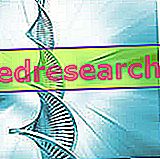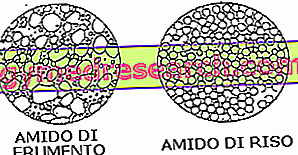article taken from the graduation thesis of Dr. Boscariol Lorenzo
«Genetic doping
Currently, gene therapy is administered to patients in well-controlled environments and the vectors used for gene transfer are produced in certified laboratories where they are extensively tested. If gene therapy were used to improve athletic performance, it is very likely that these (controlled) environments would not exist, so the risks would increase considerably.
Using drugs or genes that can improve performance always presents a certain risk, as they are designed to treat sick people and not to increase the performance of healthy ones like athletes.

To date, clinical research has been relatively safe [Kimmelman J, 2005]. More than 3, 000 patients have been treated and only one of these died of chronic liver disease and vector overdose [Raper SE et al., 2003]. In three other patients treated for immunodeficiency syndrome, leukemia-like symptoms developed [Hacein-Bey-Abina S et al., 2002] and one of these died. Since then, other research groups have treated similar patients with similar therapeutic results, without any side effects [Cavazzana-Calvo M. Fischer A, 2004]. In this case, research aims to treat patients with vectors that can never be used to increase performance.
People who try to increase their EPO levels unnaturally also increase the likelihood of having a heart attack, or acute brain episodes. The increase in red blood cells also causes an increase in the density of the blood that can cause thrombi; it is therefore not wrong to think that the adverse reactions highlighted in patients may also occur in healthy athletes [Lage JM et al., 2002].
If EPO was genetically introduced, the level and duration of erythropoietin production would be less controllable, so that the hematocrit would advance almost indefinitely, up to pathological levels.
It is hypothesized that treatment with IGF-1 may lead to the growth of hormone-dependent tumors.
It is therefore crucial that the use of pharmacogenetically selected vectors has a well-known and controlled model of gene expression.
The methods of detection of genetic doping have not yet been established exactly, also because the DNA that is transferred with gene therapy is of human origin, so it is not different from that of the athletes who use it.
Muscle therapies are confined to the injection site or to the tissue in the direct vicinity, therefore, most of the gene technologies on the muscles cannot be detected through the classic anti-doping analysis of urine or blood samples; a muscle biopsy would be necessary, but it is too invasive to be conceived as a normal means of anti-doping control.
Many forms of genetic doping do not require the direct introduction of genes into the desired organ; the EPO gene, for example, can be injected into any part of the body and locally produce the protein that will then enter the circulation. Looking for the EPO injection point would be like looking for a needle in a haystack!
In most cases, however, genetic doping will result in the introduction of an exact copy of the endogenous gene capable of giving rise to a protein completely identical to the endogenous in its post-translational modifications.
A recent publication indicates that it is possible to detect a difference between the innate protein and the product of gene therapy based on the different model of glycosylation in the different cell types, it remains only to be seen whether this is the case for all types of genetic doping [ Lasne F et al., 2004].
Public authorities and sports organizations, including the International Olympic Committee, have condemned doping since the 1960s. Recent advances in biologics will have a big impact on the nature of the medicines prescribed to patients, and will also change the choice of drugs used to improve athletic performance.
Gene therapy is authorized exclusively for clinical trials of somatic gene therapy products in humans, strictly excluding the possibility of considering any type of gene therapy of the human germ line as feasible.
The prohibition of genetic doping by the World Anti-Doping Agency (WADA) and international sports federations provides a strong basis for its elimination in sport, but it will also depend on how the various regulations will be accepted by athletes.
Most athletes do not have enough knowledge to fully understand the potential negative effect of genetic doping. For this reason it will be very important that they and their support staff are well educated, so as to prevent their use. Athletes must also be aware of the risks associated with the use of genetic doping when used in uncontrolled facilities, without compromising the infinite potential offered by official gene therapy for the treatment of serious pathologies.
The pharmaceutical industry is well aware of the possibilities and risks arising from the use of genetic doping and wants to collaborate in the development of research for the detection of gene products present in their drugs. It should preferably sign a code in which it undertakes never to produce or sell, for any reason, genetic products for non-therapeutic use.
A limited number of people from different disciplines of science and sport were interviewed, so as to get an idea about the notion and the possible impact of genetic doping on them. Among the respondents were three sports doctors, a pharmacist, four elite athletes and five scientists from the academy and the pharmaceutical industry; here are the questions:
- Are you familiar with the term genetic doping?
- What does this term mean for you?
- Do you believe in improved performance through the use of genetic doping?
- What, in your opinion, are the health risks associated with the use of genetic doping?
- Is genetic doping already used, or will it be used only in the future?
- Will it be easy to detect genetic doping?
From the various answers, it is clear that people not coming from the scientific community have little knowledge about the use of this therapy; a common fear is that gene therapy may affect the offspring, or cause tumors. People believe that the detection of genetic doping will be complex and preventative measures difficult. On the other hand, everyone insists that genetic doping will be used by athletes as soon as it is available and that this will happen in the next few years.
The professionals surrounding the elite athletes are very concerned about the possible use of genetic doping and recommend the education of their athletes and their support medical staff, in support of the development of preventive anti-doping research. These professionals are convinced that the problem of applying genetic doping to athletes will occur within the next few years and that its detection will be quite difficult.
The world of sport will sooner or later find itself faced with the phenomenon of genetic doping; the exact number of years that will have to pass for this to happen is difficult to estimate, but it can be assumed that this will happen soon, in the next few years (2008 Beijing Olympics or at most later).
From cycling to weight lifting, from swimming to soccer and skiing, all sports could benefit from genetic manipulation: just select the gene that improves the type of performance required! [Bernardini B., 2006].
Edited by : Lorenzo Boscariol



